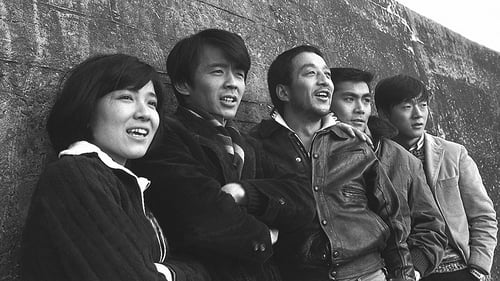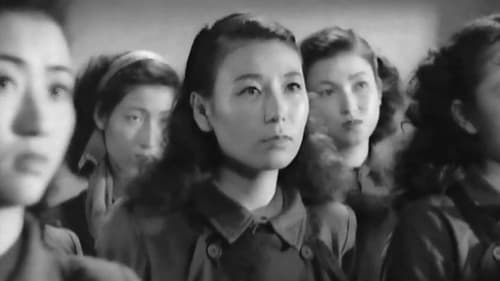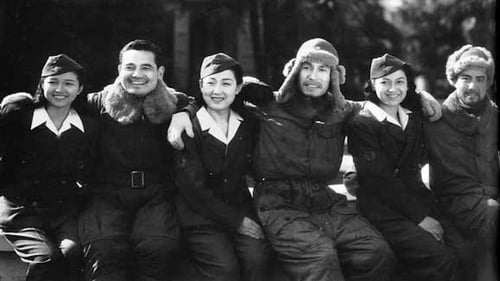
Art Direction
If You Were Young: Rage highlights the other side of post-war Japanese prosperity, focusing on the throngs of young people who missed out on the boom. We follow a group of young men that can't seem to get ahead, despite their willingness to try. Then one hits upon a plane - to work together to save for a dump truck and thus become independent contractors and be their own bosses at last. Ultimately life presents obstacles: jail for one, violence at the hands of the police for another and a girlfriend and subsequent children for the third. An early Kinji Fukasaku gem that imports the freewheeling style of the French New Wave and the hip detachment of American noir.

Art Direction
"Young People" is a story about the lives of four brothers and a sister, Sato. After the death of his parents, the older brother, Taro, who works in construction, decides to replace them. The second brother, Jiro, is a truck driver. The third, Saburo, is a student, dreams of a better future for the whole family are connected with him, with his career. Brothers and sisters are fighting to give him a higher education. And, finally, the youngest of the brothers, Suekichi, is also going to enter the university after graduation. The life of the Sato family is complicated. Taro is kind, but limited, not always able to find a common language with his brothers and sister Orie. The girl cannot stand the despotism of her brother, leaves her home and goes to work at the factory. With her departure, everything in the house goes upside down. Suekichi fails her university entrance exams, Orie is forced to return to her family.

Art Direction
Ayako, a young woman from a rural fishing village, is sold by her family into a brothel when her father takes ill. There, she is quickly stripped of her innocence and illusions.

Production Design
An entomologist suffers extreme psychological and sexual torture after being taken captive by the residents of a poor seaside village.

Art Direction

Art Direction
A provincial bus driver plans to marry his conductress, but one night he glimpses the woman he once loved, which throws him into turmoil.

Art Direction
Story of a woman, Saiko, who divorces her doctor husband when she is given a baby by a stranger who claims it is the husband's child. Saiko embarks on an affair with her cousin's husband, but a crisis threatens when she discovers that her ex-husband is about to remarry.

Assistant Director
Story of a romance between a middle-aged journalist and a young woman.

Art Direction
Follows the life of Tsuru, the poor daughter of farmers in Shinshu, Japan.

Art Direction
Alongside Tokyo's Sumida River is a ragpickers' settlement known as Ant Village. One night, a young Catholic girl, Satoko Kitahara, who has been baptized under the name of Maria, comes to offer her services. However, Ant Village is not just an ordinary vagrants' community but a fine autonomous organization, and as the municipal authorities have long been demanding that the people of Ant Village leave the site, Satoko is utilized to publicize the Village and win public sympathy. While being utilized in this manner, Satoko is nevertheless glad to be able to help the people of Ant Village, especially the children, and when the summer vacation comes she decides to take the children on an excursion to Hakone. To raise funds for this purpose she becomes a rag-picker herself.

Art Direction
Five boys escape from their life of bondage on an island 10 miles off Hiroshima, and are picked up in the Inland Sea, drifting in an open boat.

Art Direction
In a military family, an illegitimate son is brutalized by his brothers. A patriarchal, feudalistic household where dissent is forbidden is used to reveal the whole imperialist system that afflicted Japan between 1921 and 1946. Winner of the Crystal Globe at the Karlovy Vary Film Festival.

Production Design
Three short tales from stories by Ichiyo Higuchi. In one, a young woman is degraded by her family after an arranged marriage. Another deals with the troubles heaped upon a young servant by her family and the wealthy people who employ her. The final story tells of a prostitute and her hopes of finding a new, respectable life.

Art Direction
広島にある高校。北川が受け持つ三年生のクラスで、生徒の大庭みち子が鼻血を出して倒れた。それは原爆による白血病が原因だった。このクラスでは、実に三分の一の生徒が被爆者だったのだ。あの日、ゆき子の姉は疎開作業中に被爆し、川の中で絶命した。遠藤幸夫の父親は、建物の下敷きになり炎に包まれた妻を助けることができなかった。原爆投下から七十五年は草木が生えないといわれた広島に大根の芽が出たとき、人々はその芽に希望を見いだしていた。

Art Direction
士官の財布を盗んだとして、木谷は陸軍刑務所に二年間服役。出所した木谷は軍の内務班に復帰した。班の内部では班長をはじめ古参兵たちが、初年兵をいじめていた。特に一等兵の會田は大学出ということもあり、日常的に暴力を受けていた。しかし木谷だけはそんないじめには加担していなかった。會田は木谷に好意を寄せ親しくなるが、木谷が野戦送りの人員に選ばれることを知ってしまう。木谷が刑務所へ送られたのも、野戦送りの人員に選ばれたのも、すべては派閥争いによるものだった。

Art Direction

Production Design
The critical establishment was clearly not prepared to accept a woman's prison film featuring former prostitutes recovering from venereal diseases, unwanted pregnancies, and estranged lovers. With its cat fights, hysterical tantrums, film noir lighting, and dramatic music, White Beast is indicative of the new influences of the Hollywood psychological thriller on Naruse. Caged (John Cromwell, 1950) initiated a cycle of women's prison movies in the United States that may or may not have been shown in Japan, but the stylistics of White Beast draw on the same paranoid woman's films and film noir conventions that preceded the American cycle.

Art Direction
The story of an airport and its air traffic control crew in a remote and northern Japanese town. Three of the air traffic controllers are female with one of them working with her dead fiancé's sister. The engaged man had gone to war and never returned.

Art Direction
A self-absorbed young actor humiliates an elderly Noh performer, who then commits suicide. His act of cruelty compels his father to disown him, leading the once promising actor to a life on the streets. But his desire to win back the respect of his father and the affection of the dead actor's daughter pushes him toward a more noble existence. Naruse employed a delicately structured mise-en-scene in this family melodrama, which evokes the work of Josef von Sternberg.














